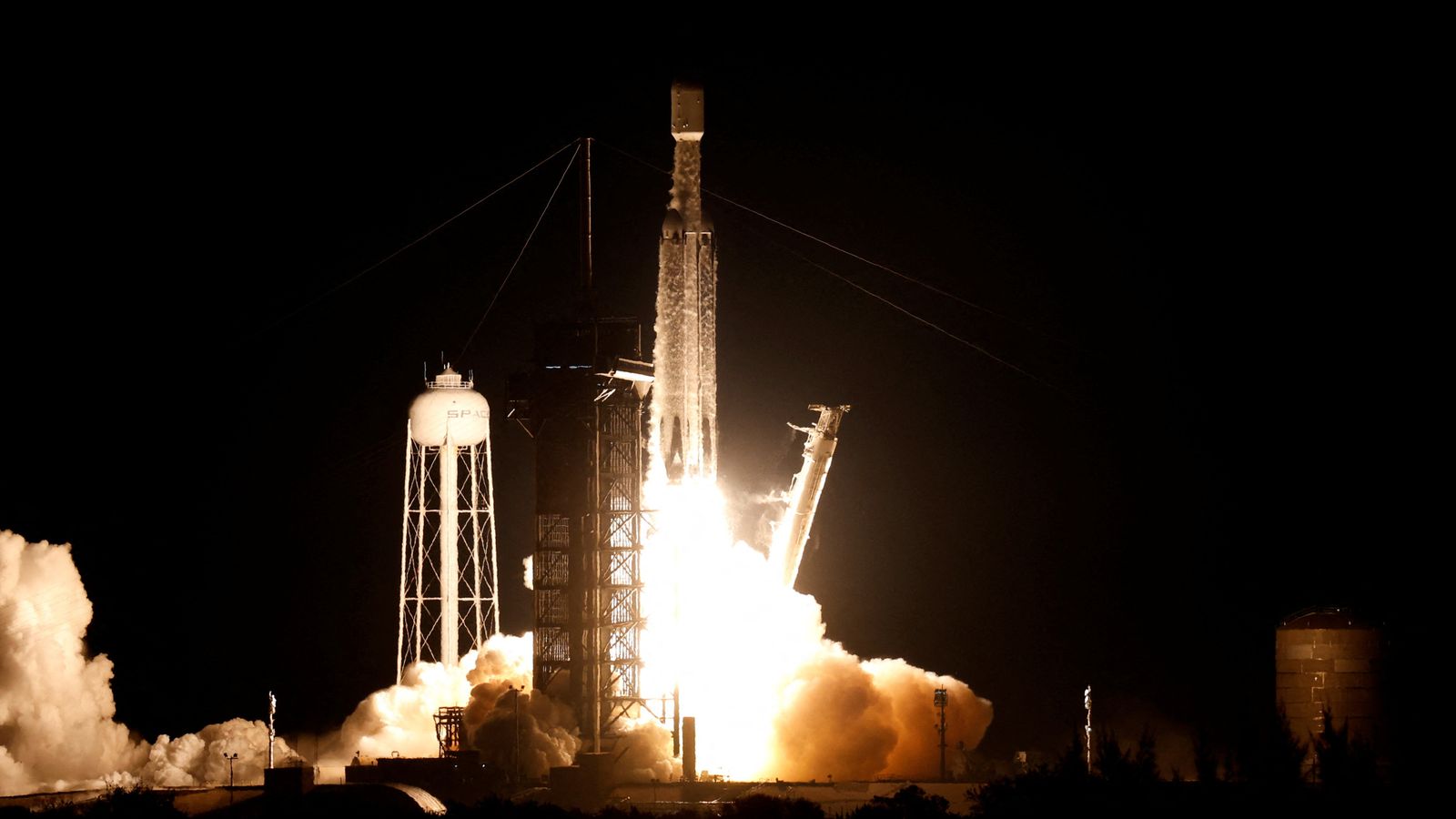A secretive US government spaceplane has embarked on a classified mission aboard one of the world’s most powerful rockets.
The X-37B craft was launched from NASA‘s Kennedy Space Center in Florida on a SpaceX Falcon Heavy.
It has been on six previous missions since 2010, most recently in 2020, but the rocket used on Thursday can take it further into space than ever before.
X
This content is provided by X, which may be using cookies and other technologies.
To show you this content, we need your permission to use cookies.
You can use the buttons below to amend your preferences to enable X cookies or to allow those cookies just once.
You can change your settings at any time via the Privacy Options.
Unfortunately we have been unable to verify if you have consented to X cookies.
To view this content you can use the button below to allow X cookies for this session only.
The Boeing-built vehicle, roughly the size of a small bus and resembling a miniature space shuttle, has stayed within Earth’s lower orbit until now – an altitude of below 1,200 miles.
But Falcon Heavy – composed of three rocket cores strapped together – is capable of carrying much heavier payloads more than 22,000 miles above the planet.
It’s led to speculation that X-37B could be destined for the orbit of more faraway locations, perhaps even Mars.
Few details have been revealed about the mission, which is operated by the US Space Force under the military’s National Security Space Launch programme.
Mission will test how plants may grow in space
X-37B is designed to conduct experiments in space, which this time will involve tests of “new orbital regimes, experimenting with future space domain awareness technologies”.
One of its tasks that has been detailed is a NASA study to see how plant seeds are affected by extended exposure to harsh space radiation, with a view to possible long-term human missions to the moon and Mars.
Once its quest is complete, X-37B should return to Earth and land via a runway – much like a plane.
But it’s not expected back until some time in 2026, with its last mission lasting more than two years.
Across its six missions so far, it has spent over a decade in orbit.
The launch – which was delayed several times due to technical issues and poor weather – comes two weeks after China‘s equally secretive Shenlong spaceplane was blasted into orbit.
Also known as Divine Dragon, it was the reusable craft’s third mission since 2020.












Post comments (0)